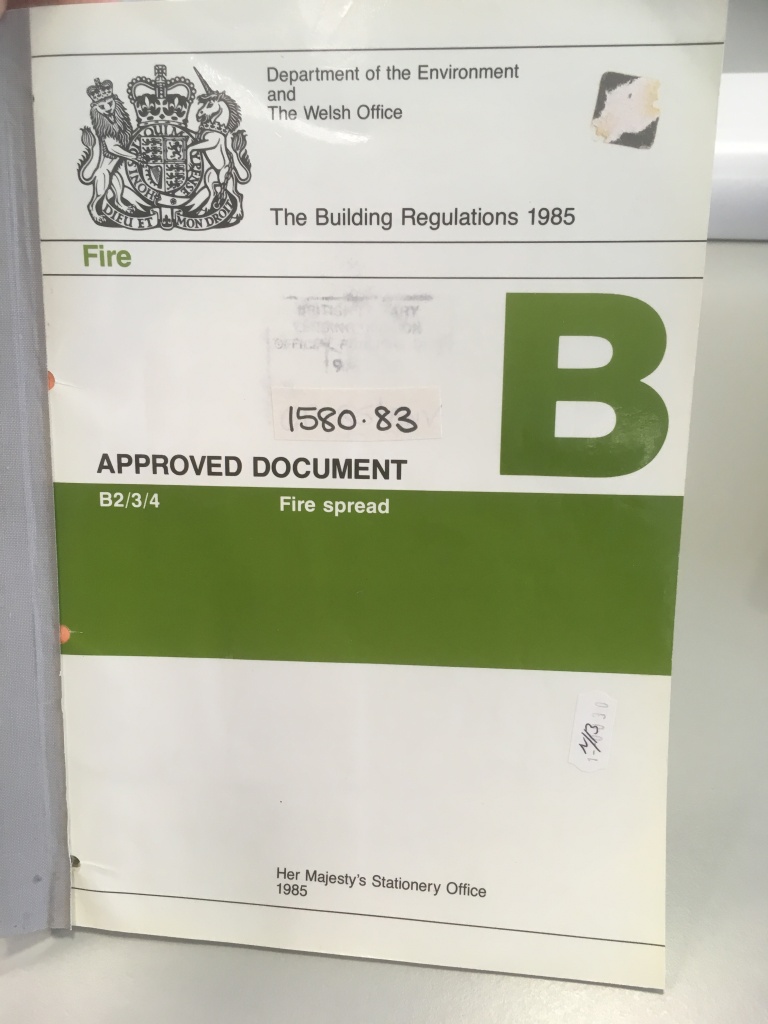The following report is from Dr Shane Ewen, Co-Investigator on the Forged by Fire project, on his recent participation in a series of academic workshops to aid the public inquiry into the Grenfell Tower fire of 14 June, 2017. A video stream of the proceedings is available to watch here.
I recently gave a Zoom presentation on the history behind the Grenfell Tower fire, focusing on some forty years of deregulation of the building regulations. This talk and the accompanying images draws upon research for the AHRC Forged by Fire project and is part of a book I am writing about the politics and culture of fire safety during the twentieth century (in the eras of the regulatory and deregulatory state). The book draws upon extensive archival research in a variety of governmental and non-governmental archives, and traces the creation of a national fire safety regime in the twentieth century and its subsequent unraveling from the 1980s. It builds upon existing research and ideas I developed in a Policy Paper published with History & Policy in 2018 (‘Why red tape saves lives: the fire service, tombstone legislation and deregulating safety in Britain’) and also delivered in a public lecture at the Museum of the Order of St John in January 2020 as part of our project exhibition (which feels such a long time ago now!).

Above: Approved Document B, first published by the Conservative Government’s Department of Environment in 1985, concerns structural provisions affecting fire spread within a building, including the provision of means of escape. Image c/o British Library.
This recent series of seminars, hosted by the Bartlett School of Construction and Project Management in association with the School of History, Philosophy and Social Sciences, Bangor University, accompanied the inquiry by discussing the key financial, economic, management and social phenomena in urban housing that led to the disaster in an academic setting.
The seminars examined the key aspects of the climate and context in which the disaster occurred in order to extrapolate the wider implications and lessons for how urban housing is funded, managed, and supports the social and working lives of urban inhabitants.
My own contribution was stimulated by the narrow terms of reference set for the inquiry and the brief historical context provided in the Phase One report, which was published a year ago, on 30 October 2019.
My talk was part of Panel 2 on Friday 16 October 2020, which focused on building regulation and deregulation, and was co-chaired by Dr Judy Stephenson and Sam Stein, Q.C., who is representing the victims, bereaved and survivors from the local community during the Public Inquiry. Other contributors included Matt Wrack, the General Secretary of the Fire Brigades Union, and Peter Apps, deputy editor at Inside Housing, which has led from the front in its forensic investigations into the regulatory minefield of fire safety and building control.

Above: Firefighter ‘Cuts Do Kill’ campaign, taken from the journal of the Fire Brigades Union, April 1981, c/o Modern Records Centre, Warwick.
A video stream of the proceedings is available to watch here. My talk begins around the 40 minute mark in Panel 2, though I would recommend watching all the talks if you want to know more about the issues relating to the history of the building regulations and the state’s failure to deal with the lessons of the past. These talks would be of interest to academics working across urban and architectural history, disaster studies, fire engineering, sociology and human geography, as well as housing activists, fire safety professionals, and representatives from industry and government.
